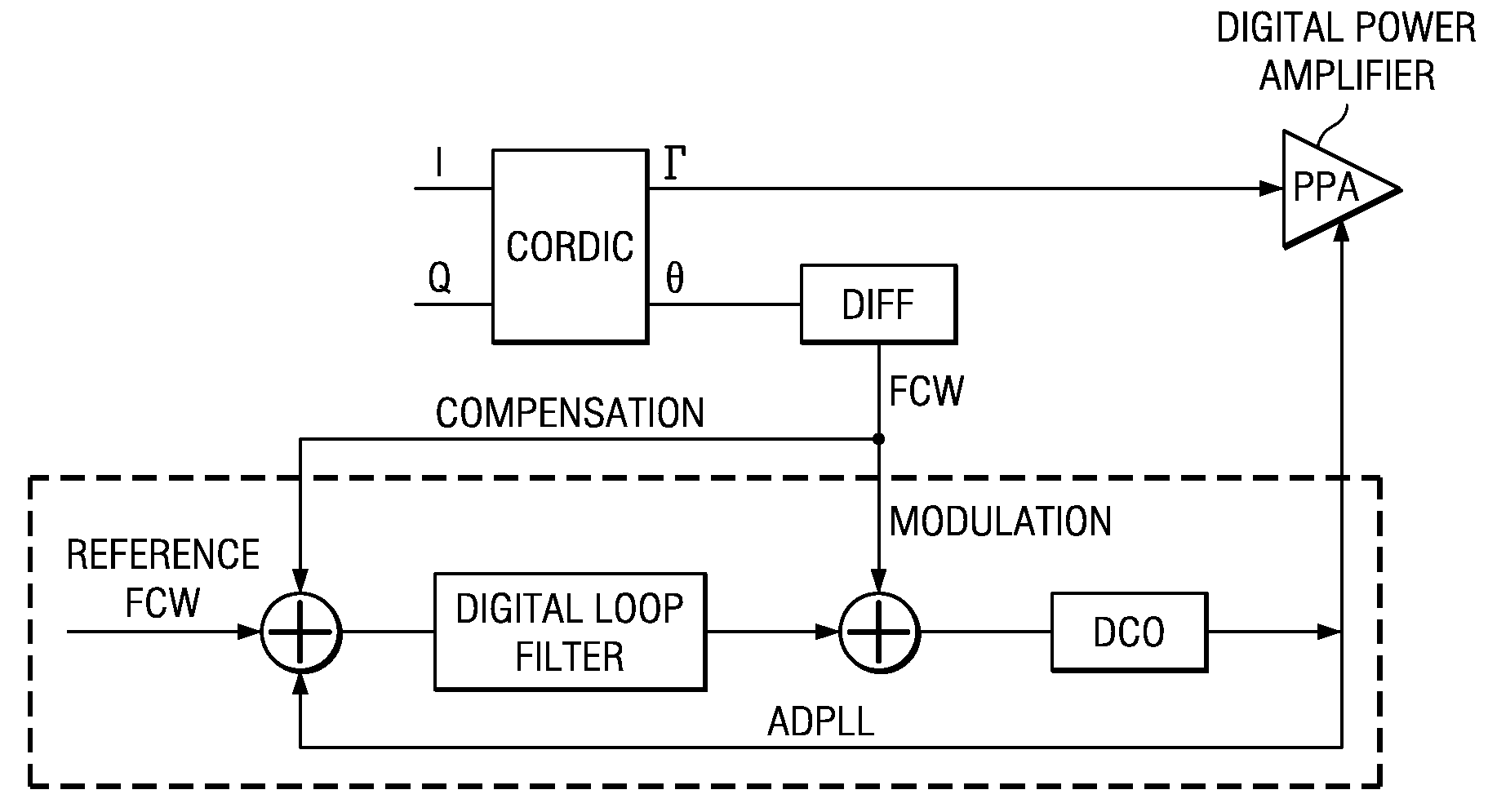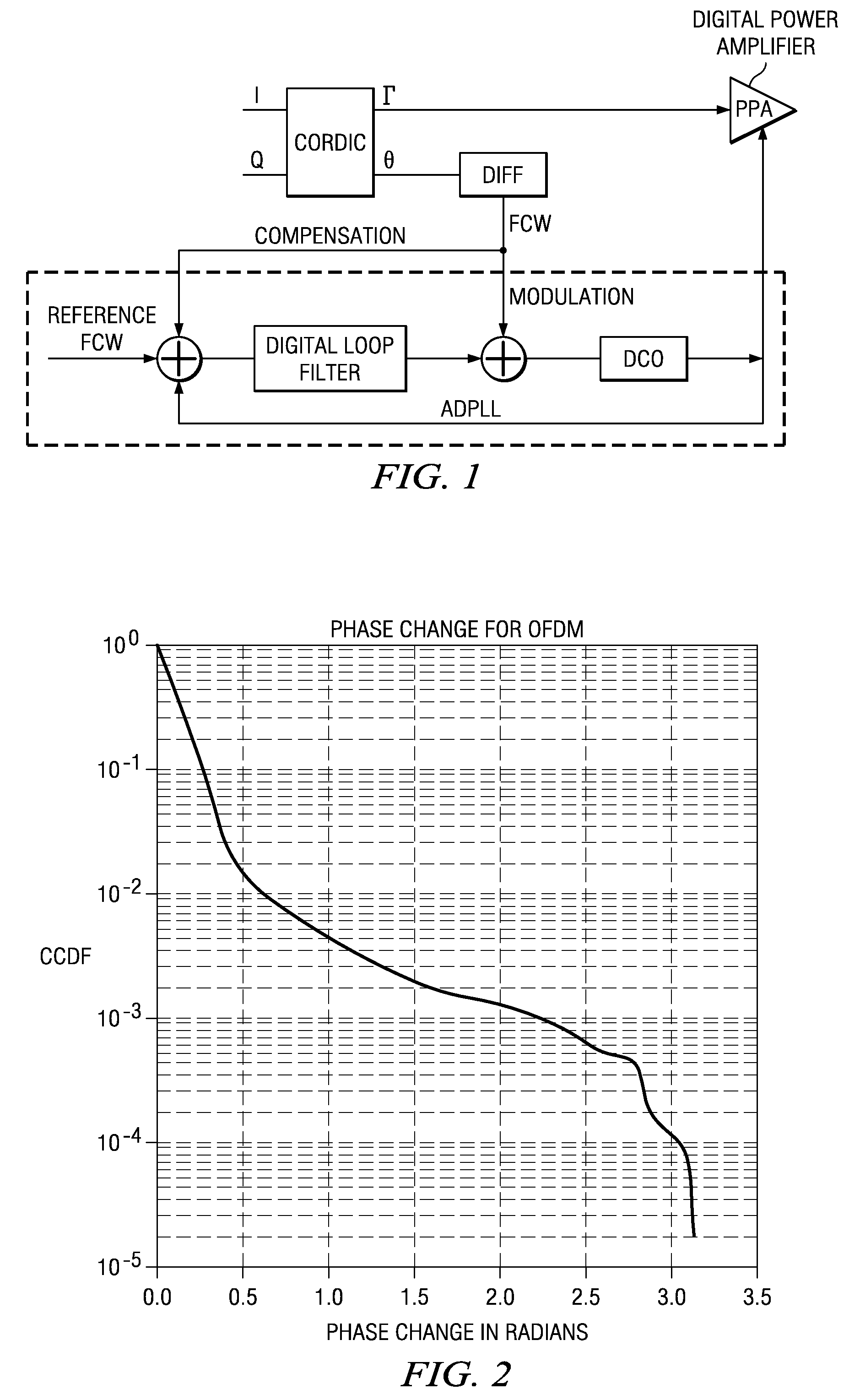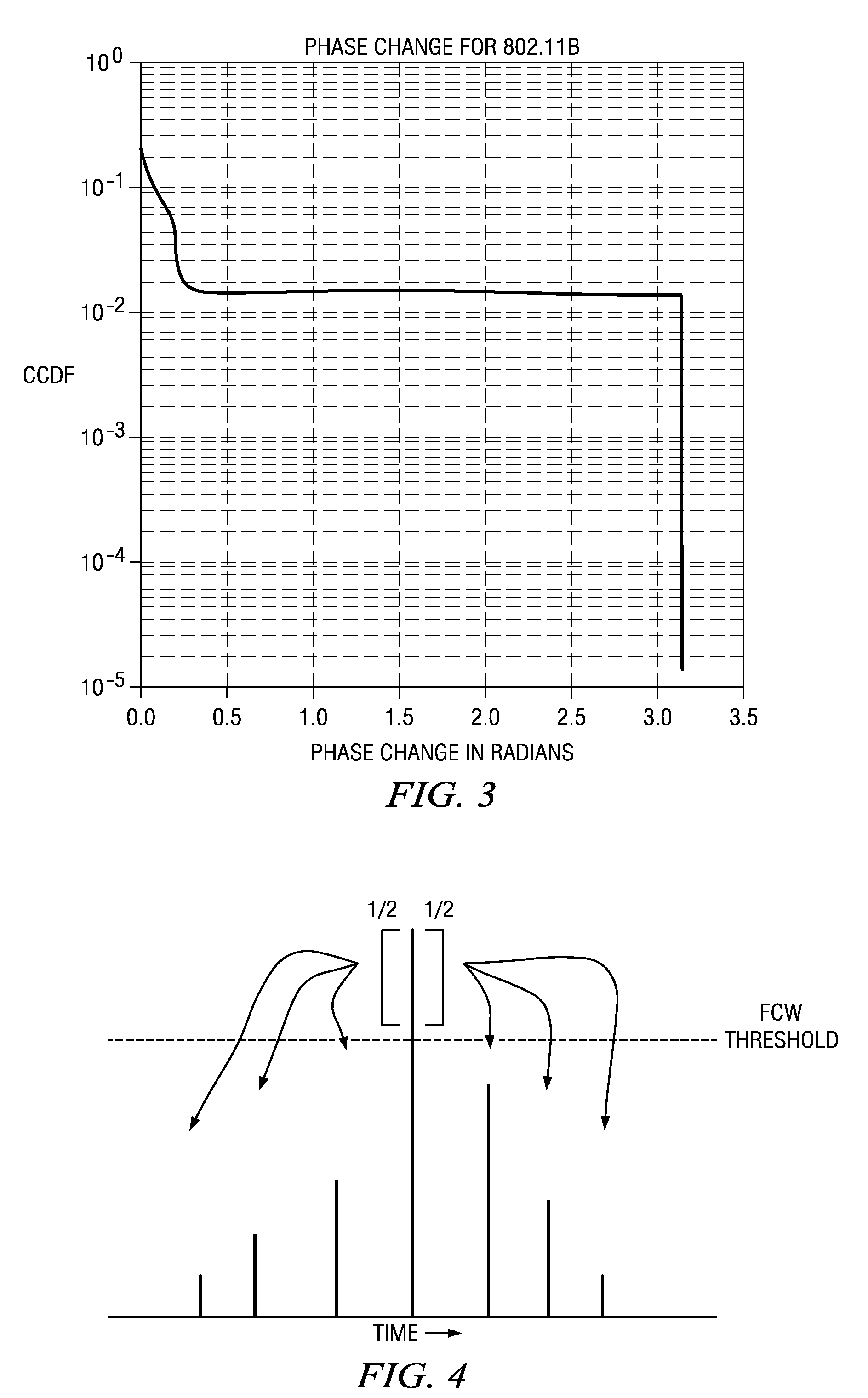Digital radio processor architecture with reduced dco modulation range requirement
- Summary
- Abstract
- Description
- Claims
- Application Information
AI Technical Summary
Benefits of technology
Problems solved by technology
Method used
Image
Examples
Embodiment Construction
[0016]The invention is directed to a method of reducing DCO modulation range requirement in DRP architectures, by controlling FCW so that no FCW value exceeds a predetermined threshold.
[0017]Described herein in the context of reducing the DCO modulation range requirement in a DCO is an algorithm which modifies the FCW profile from the CORDIC to limit the maximum instantaneous frequency going into DCO with very little degradation in the performance of the system. This in turn reduces the modulation range requirement in the DCO without adversely affecting EVM and without complex analog implementations.
[0018]In one form the invention resides in a method, in a DRP (Digital Radio Processor) which uses a Cordic block that converts IQ signal samples from baseband to r and θ samples, and which includes a DCO (Digitally Controlled Oscillator) wherein phase difference between consecutive samples is termed as FCW (Frequency Control Word), the method being configured for digitally modifying and...
PUM
 Login to View More
Login to View More Abstract
Description
Claims
Application Information
 Login to View More
Login to View More - R&D
- Intellectual Property
- Life Sciences
- Materials
- Tech Scout
- Unparalleled Data Quality
- Higher Quality Content
- 60% Fewer Hallucinations
Browse by: Latest US Patents, China's latest patents, Technical Efficacy Thesaurus, Application Domain, Technology Topic, Popular Technical Reports.
© 2025 PatSnap. All rights reserved.Legal|Privacy policy|Modern Slavery Act Transparency Statement|Sitemap|About US| Contact US: help@patsnap.com



